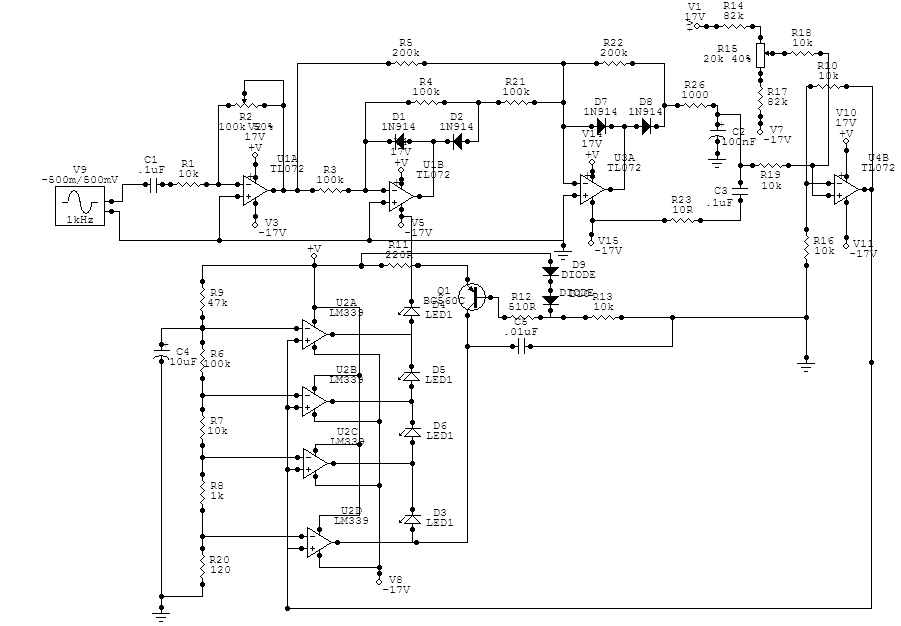OddHarmonic
Well-known member
Well, the audio side of my first two Green Pres seems to work just fine, although I haven't REALLY pushed them yet, as I'm moving my focus to the meter sections, which so far are non-functioning. V+/- check out OK on the TL072 and the LM339, with the two ICs OUT, all LEDs light up which Peter indicated in a previous thread as being normal. With the ICs IN, all LEDs stay lit as well. I am stuck on the second step of the Green Pre Setup:
"Setting the Peak detector DC offset (20k Multiturn trimmer).
1. Set the rotary gain switch to minimum gain with no input signal.
2. Attach the multimeter + probe (set multimeter to DC mV) to the link behind the 10k Output Trim pot. The other multimeter lead goes to
+ground.
3. Trim the 20k trimmer to read as close to -3mV as possible. "
TMBG earlier expressed some confusion what link Peter was talking about, and Peter clarified with this pic:

If I'm seeing things straight, this link leads from the output of TL072 #3 to the non-inverting inputs on the LM339. I am measuring 13.85 VDC and this value is not effected by the 20K trimmer. The obvious value that is adjusted by the 20K trimmer is the input to the non-inverting input on TL072 #3. The schematic confirms this. What am I doing wrong here?? Any ideas?
Ah, and here is the schematic:

Thanks,
Andrew
"Setting the Peak detector DC offset (20k Multiturn trimmer).
1. Set the rotary gain switch to minimum gain with no input signal.
2. Attach the multimeter + probe (set multimeter to DC mV) to the link behind the 10k Output Trim pot. The other multimeter lead goes to
+ground.
3. Trim the 20k trimmer to read as close to -3mV as possible. "
TMBG earlier expressed some confusion what link Peter was talking about, and Peter clarified with this pic:

If I'm seeing things straight, this link leads from the output of TL072 #3 to the non-inverting inputs on the LM339. I am measuring 13.85 VDC and this value is not effected by the 20K trimmer. The obvious value that is adjusted by the 20K trimmer is the input to the non-inverting input on TL072 #3. The schematic confirms this. What am I doing wrong here?? Any ideas?
Ah, and here is the schematic:

Thanks,
Andrew



